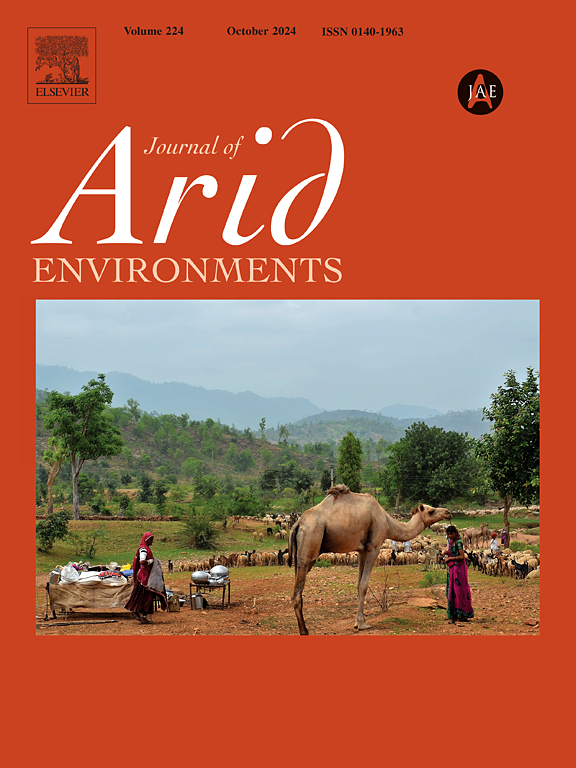索诺兰沙漠树种气孔对高温和干旱的敏感性取决于叶片物候、功能和生理性状之间的协调
IF 2.5
3区 环境科学与生态学
Q2 ECOLOGY
引用次数: 0
摘要
在索诺兰沙漠,由于高气温(Tair)和蒸汽压差(VPD),即使在雨季,树木也面临极端的水和热压力。为了应对Tair和VPD,树木应该精细地调节气孔导度(gs),但我们预计常绿物种对这些变化的敏感性通常低于落叶物种,因为它们对干旱胁迫的耐受性更强。我们利用附近气候站的环境数据,在野外条件下测量了六种落叶树种和六种常绿树种的gs。我们利用5个指标评估了气孔敏感性,并测量了膨胀损失点的叶片水势(Ψtlp),以及叶片干物质含量(LDMC)、气孔大小和密度等与干旱响应相关的叶片性状。研究结果表明,高Tair和VPD显著影响gs,在较高叶温下往往导致气孔关闭。常青树表现出较强的耐旱性,对VPD和温度的敏感性较低,LDMC较高(P = 0.004),比叶面积较小(SLA, P <;0.001),较低Ψtlp (P <;0.001)。相比之下,落叶植物通过等水气孔控制来调节干旱胁迫,在极端条件下可能会落叶,而常绿植物尽管存在潜在的水力功能障碍,但却能承受更高的干旱胁迫水平。本文章由计算机程序翻译,如有差异,请以英文原文为准。
Stomatal sensitivity to heat and drought depends on coordination between leaf phenology, functional and physiological traits in Sonoran Desert tree species
In the Sonoran Desert, due to high air temperature (Tair) and vapor pressure deficit (VPD), trees face extreme water and thermal stress even during the rainy season. In response to Tair and VPD, trees should finely regulate their stomatal conductance (gs), but we would expect evergreen species to generally show less sensitivity to these changes than deciduous species because of their greater tolerance to drought stress. We measured gs in six deciduous and six evergreen tree species in field conditions, using environmental data from a nearby climate station. We evaluated stomatal sensitivity using five indices and measured leaf water potential at the turgor loss point (Ψtlp), along with leaf traits such as leaf dry-matter content (LDMC), stomatal size, and density, which are related to drought response. Our findings showed that high Tair and VPD significantly influence gs, often causing stomatal closure at higher leaf temperatures. Evergreens exhibited greater drought tolerance, less sensitivity to VPD and temperatures, and higher LDMC (P = 0.004), smaller specific leaf areas (SLA, P < 0.001), and lower Ψtlp (P < 0.001). In contrast, deciduous species regulate drought stress through isohydric stomatal control and may drop leaves under extreme conditions, while evergreens withstand higher stress levels despite potential hydraulic dysfunction.
求助全文
通过发布文献求助,成功后即可免费获取论文全文。
去求助
来源期刊

Journal of Arid Environments
环境科学-环境科学
CiteScore
5.70
自引率
3.70%
发文量
144
审稿时长
55 days
期刊介绍:
The Journal of Arid Environments is an international journal publishing original scientific and technical research articles on physical, biological and cultural aspects of arid, semi-arid, and desert environments. As a forum of multi-disciplinary and interdisciplinary dialogue it addresses research on all aspects of arid environments and their past, present and future use.
 求助内容:
求助内容: 应助结果提醒方式:
应助结果提醒方式:


